A Guide to Get Your iPhone or iPad into Recovery Mode
Recovery Mode is an essential functionality for troubleshooting an iOS device. Much like most digital devices, an iPhone can experience trouble with a variety of software or an app. After entering the Recovery Mode, you can fix a wide range of software issues on your iOS device effectively. According to our research, some people do not understand how to enter Recovery Mode on an iPhone or iPad. This article shares a comprehensive guide.

In this article:
Part 1. How to Put iPhone in Recovery Mode
To place an iPhone or iPad in Recovery Mode, you need a PC or Mac, the latest version of iTunes or Finder, a Lightning cable, and a stable internet connection for your computer. After your device enters the Recovery Mode, you can update the software or restore your device to its factory status.

Power off your iPhone or iPad. Next, connect your iOS device to your computer with a compatible cable.
Open iTunes on Windows and macOS Mojave or older. Run Finder on macOS Catalina or newer.
Next, hold down the right button combination according to your device model. When you get the iPhone into Recovery Mode, release the button combination.
As long as iTunes or Finder detects your device in Recovery Mode, a pop-up dialog will appear with three options, Cancel, Restore, and Update.
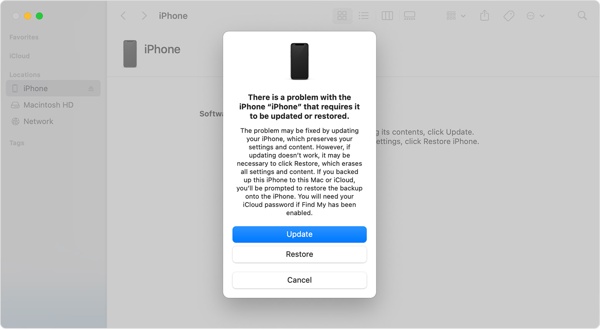
Part 2. What Are the Button Combinations for Different iPhone Models
The button combinations to get into iPhone Recovery Mode are different depending on your device model. To help you clarify it, we explain the button combinations respectively according to the device model below:
Button Combination for iPhone 8 and Newer
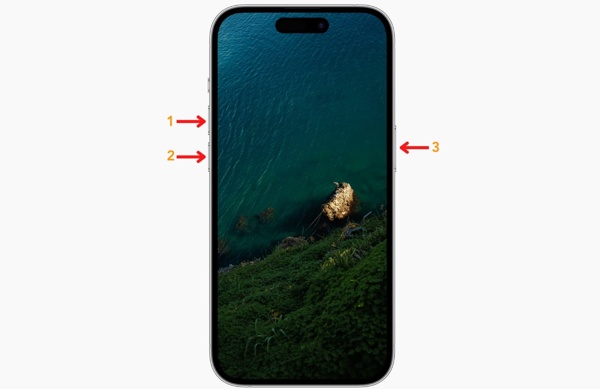
Press the Volume Up button and quickly release it.
Immediately press the Volume Down button and quickly release it.
Keep pressing the Power button until you see the Recovery Mode screen.
Button Combination for iPhone 7/7 Plus
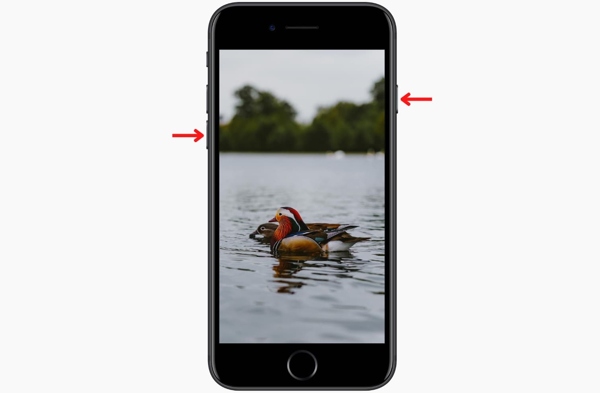
Press and hold the Side + Volume Down buttons at the same time.
When the Recovery Mode screen appears, release the button combination.
Button Combination for iPhone 6s/SE and Older
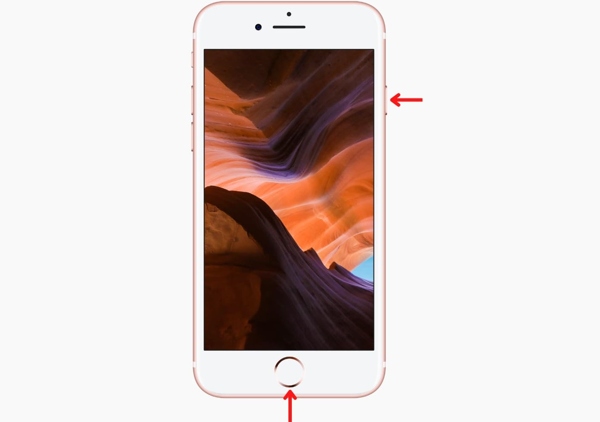
Hold down the Home and Power buttons together.
Keep pressing them until the Recovery Mode screen pops up.
Button Combination for iPad Without Home Button

Press the Volume button nearest to the Power button and quickly release it.
Power button.
Next, hold down the Power button until the Recovery Mode screen pops up.
Button Combination for iPad with Home Button
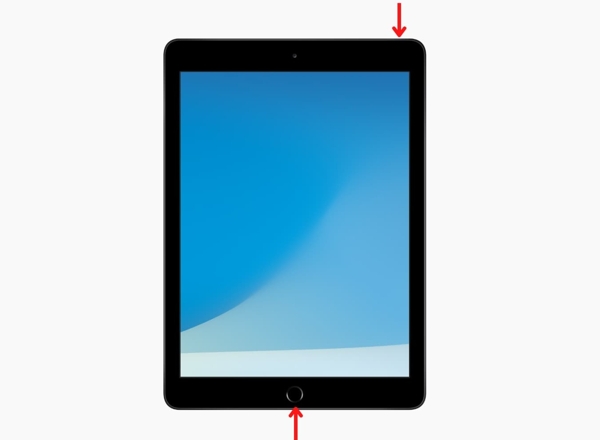
Hold down the Home + Power buttons simultaneously.
When you see the Recovery Mode screen on your iPad, release the buttons.” /]Part 3. When Do You Need to Use iPhone Recovery Mode
As mentioned previously, Recovery Mode is designed for troubleshooting when your iPhone or iPad runs into software issues. Here are the scenes that you should get your iPhone or iPad into Recovery Mode:
1. Software updates fail. Apple releases updates for iOS regularly to fix bugs and introduce new features. Users are suggested to install the updates in time. Sometimes, software update fails or get interrupted, leaving an unresponsive device. You can update the software in Recovery Mode.
2. iOS device gets stuck. If your iPhone or iPad gets stuck on a specific screen, like the Apple logo or iPhone stuck in SOS mode. Recovery Mode can help you get rid of the trouble.
3. iTunes or Finder cannot recognize your device. Users need to back up and manage their devices with iTunes on PC or Finder on Mac. However, some of them encounter the problem that your device isn't detected. Putting it into Recovery Mode can force a connection.
4. iPhone or iPad won't turn on. If your iOS device only shows a black or blue screen and won't turn on, you can place your iPhone or iPad in Recovery Mode.
5. Failure when restoring an iOS device. If it takes a long time when trying to restore your iPhone or iPad from a backup, you'd better put your device into Recovery Mode and restore it following the instructions.
6. Boot loop issues. When your iOS device continuously reboots without entering the Home screen, Recovery Mode can break the loop.
Part 4. If I Restore My iPhone, Do I Lose Everything
After an iPhone or iPad enters Recovery Mode, you will see three options on the pop-up dialog, Cancel, Restore, and Update. The first one lets your device quit the Recovery Mode. The second allows you to restore your device to the factory status. The third enables you to update to the latest version of the software.
In other words, you will lose everything on your device if you choose Restore. Of course, it is able to fix a variety of software issues. To get back your data after restoring an iPhone in Recovery Mode, imyPass iPhone Data Recovery is a good option.
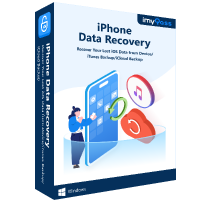
4,000,000+ Downloads
Recover data from the iPhone without backup after restoring.
Preview lost data before recovery.
Select specific data for recovery or retrieve the entire iPhone.
Filter deleted or lost data on your iPhone.
Support the latest versions of iOS.
Here are the steps to recover data after restoring iPhone in Recovery Mode:
Launch the best iPhone data recovery software after installing it on your computer. Connect your iPhone to your computer with a Lightning cable. Choose Recover from iOS Device, and click Start Scan.
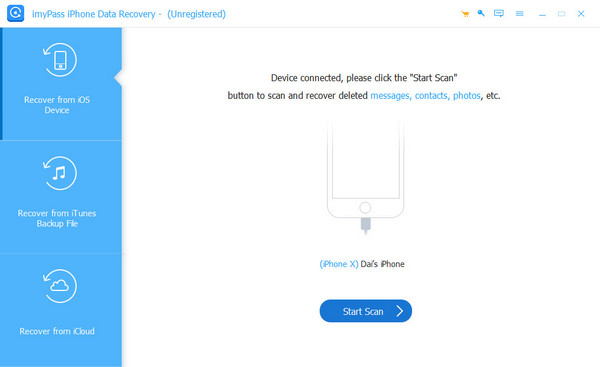
Next, choose the desired data categories on the left side, like Camera Roll. Then preview the data on the preview window
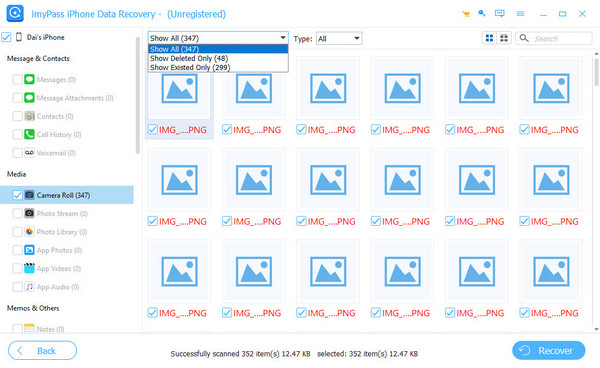
Select the file and items that you want to recover, and click the Recover button. Then set an output folder, and hit Recover. For example, you can recover deleted calls on iPhone.
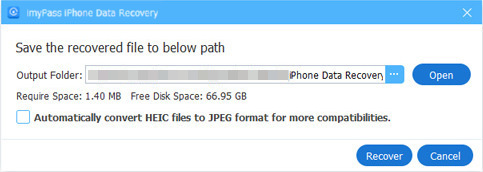
Conclusion
This guide discussed how to enter Recovery Mode on iPhone 13 and other models not updating. We demonstrated the different button combinations for various iOS device models. imyPass iPhone Data Recovery can help you get back lost data after restoring. If you have other questions about this topic, please feel free to leave a message below this post.

